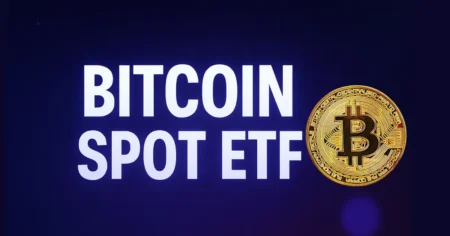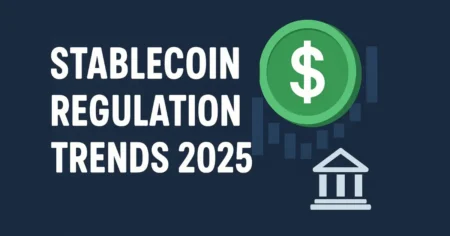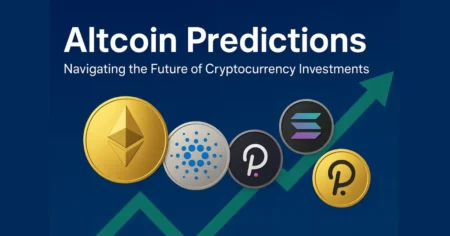AI and blockchain in finance
Introduction
The financial industry is rapidly evolving, driven by advances in digital technology. Among the most transformative innovations are Artificial Intelligence (AI) and Blockchain—two powerful forces reshaping how financial services are delivered, managed, and secured. From automated trading systems to secure digital transactions, these technologies are changing how we think about money, trust, and decision-making.
While AI can process vast amounts of data and make intelligent predictions, blockchain offers transparency, security, and decentralization. Together, they are redefining the foundation of modern finance. In this blog, we’ll explore how AI and blockchain are individually impactful, how they work together, and what they mean for the future of finance.
What is Artificial Intelligence in Finance?
Artificial Intelligence (AI) refers to the ability of machines and software to simulate human intelligence. In the financial industry, AI is being used to analyze large volumes of data, recognize patterns, and make fast, data-driven decisions—often faster and more accurately than humans.
Here are some major ways AI is used in finance:
- Fraud Detection: AI can monitor thousands of transactions in real time and quickly identify suspicious behavior, helping banks prevent fraud before it causes damage.
- Risk Management: Financial institutions use AI to evaluate credit scores, assess market conditions, and predict potential risks. This leads to better investment decisions and improved financial planning.
- Algorithmic Trading: AI-powered algorithms analyze market data and execute trades at high speed. These systems can respond to market changes instantly, often gaining an edge over traditional methods.
- Customer Service: AI chatbots and virtual assistants are now handling customer inquiries, helping users with account details, payments, and basic financial advice, 24/7, without human agents.
- Personalized Financial Services: AI is used to tailor investment advice, loan offers, and banking services to individual customers, based on their financial history and behavior.
AI is making finance more efficient, accurate, and responsive. It not only reduces human error but also opens up new ways to serve customers and manage money intelligently.
What is Blockchain in Finance?
Blockchain is a type of digital ledger technology that records transactions across a distributed network of computers. Unlike traditional databases managed by a single organization, blockchain is decentralized, meaning no single entity controls the data. Once a transaction is recorded on the blockchain, it cannot be changed, making it highly secure and transparent.
In the financial industry, blockchain is being used in several impactful ways:
- Secure and Transparent Transactions: Every transaction on a blockchain is verified by multiple participants in the network and is permanently recorded. This reduces the risk of fraud and ensures full transparency.
- Smart Contracts: These are self-executing agreements written in code that automatically carry out actions when certain conditions are met. For example, a smart contract can automatically release payment when goods are delivered.
- Cross-Border Payments: Blockchain enables fast, low-cost international transactions without relying on traditional banks or intermediaries. This can reduce delays and transaction fees significantly.
- Decentralized Finance (DeFi): DeFi is a new movement that uses blockchain to create financial services—like lending, borrowing, and trading—without relying on traditional banks. Users interact with smart contracts instead of financial institutions.
- Tokenization of Assets: Blockchain allows real-world assets like real estate, stocks, or commodities to be digitized and traded as tokens, increasing liquidity and market access.
By improving security, transparency, and efficiency, blockchain is transforming the financial system. It’s not just a trend—it’s becoming a foundation for the future of finance.
How AI and Blockchain Work Together

Individually, Artificial Intelligence (AI) and Blockchain are powerful tools. But when they are combined, they create a new level of innovation in finance, bringing both intelligence and trust to digital financial systems.
Here’s how they complement each other:
- Trusted Data for AI Models: AI systems rely on large volumes of accurate and consistent data. Blockchain ensures that data is secure, tamper-proof, and transparent. This creates a reliable foundation for AI algorithms to analyze and make decisions.
- Enhanced Fraud Detection: Blockchain provides an unchangeable record of transactions. AI can scan this data in real-time to identify suspicious activity or unusual patterns, helping detect and prevent fraud more effectively.
- Smart Contracts with AI Logic: Smart contracts are typically rule-based. By integrating AI, these contracts can become more dynamic, c—learning from data, adapting to new conditions, and even making predictive decisions based on past trends.
- Automated Auditing and Compliance: Blockchain’s transparent record-keeping makes auditing easier, while AI automates compliance checks by scanning through blockchain data to flag any irregularities or rule violations.
- Predictive Analytics for Financial Services: When blockchain stores customer or transaction data securely, AI can use it to forecast market trends, customer behavior, and potential risks, improving investment strategies and product development.
Together, AI and blockchain offer a blend of intelligent automation and secure transparency. This partnership is not just improving existing financial services—it’s creating entirely new ones.
Benefits of Integrating AI and Blockchain in Finance

The combination of AI and blockchain offers more than just efficiency—it unlocks new levels of security, transparency, and automation in the financial world. Here are the key benefits of integrating these two technologies:
Stronger Security and Fraud Prevention
Blockchain provides a secure, tamper-proof record of transactions. When combined with AI’s ability to detect unusual behavior, financial systems become much better at identifying and stopping fraud in real time.
Improved Transparency and Trust
Blockchain’s decentralized nature ensures that all data is traceable and visible to authorized parties. AI can process and interpret this data, giving financial institutions and regulators greater insight into operations and compliance.
Faster and Smarter Transactions
Smart contracts, powered by blockchain, automate transactions based on pre-set conditions. When AI is added, these contracts can become more flexible and intelligent, adapting to new data and making decisions faster than traditional systems.
Reduced Operational Costs
Automation through AI and blockchain eliminates the need for many manual processes, such as data entry, verification, and compliance checks. This reduces labor costs and improves overall efficiency.
Better Risk Management
AI can analyze blockchain data to identify potential risks, market trends, or customer behavior patterns. This allows financial institutions to make more informed decisions and proactively manage risks.
Enhanced Customer Experience
By using secure blockchain records and AI-driven personalization, financial services can offer faster, more reliable, and customized experiences—from quicker loan approvals to tailored investment advice.
When used together, AI and blockchain don’t just modernize finance—they redefine it. The integration enables smarter systems that are faster, more transparent, and much more secure.
Challenges and Limitations
While the integration of AI and blockchain offers significant advantages, it also comes with several challenges that financial institutions and developers must address. Understanding these limitations is crucial for successful implementation.
Technical Complexity
Combining AI and blockchain requires a high level of technical expertise. AI systems need vast amounts of data and computing power, while blockchain demands secure, scalable infrastructure. Integrating both technologies can be difficult, especially for organizations without strong technical teams.
Scalability Issues
Blockchain networks, especially public ones, can struggle with processing a high volume of transactions quickly. When AI applications require fast access to real-time data, this limitation can slow down performance and reduce effectiveness.
Data Privacy Concerns
Blockchain is transparent by design, while AI thrives on analyzing large amounts of personal or sensitive data. Balancing transparency with privacy can be challenging, especially in financial services where customer confidentiality is critical.
Regulatory Uncertainty
Financial regulations around AI and blockchain vary by country and are still evolving. Lack of clear guidelines can make it difficult for companies to innovate without legal risk, particularly in areas like data usage, smart contracts, and decentralized finance (DeFi).
High Implementation Costs
Building and maintaining AI-blockchain systems can be expensive. Smaller financial institutions or startups may find it hard to justify the upfront investment without guaranteed returns.
Interoperability and Integration
Existing banking systems are often built on legacy infrastructure. Integrating AI and blockchain into these older systems can lead to compatibility issues and delays in deployment.
Despite these challenges, many organizations are actively working on solutions. With ongoing advancements, the integration of AI and blockchain will become more accessible and efficient over time.
Future Outlook

The future of finance is being shaped by the rapid development and convergence of Artificial Intelligence (AI) and Blockchain. As these technologies mature, they are expected to unlock new possibilities and redefine how financial systems operate.
AI-Powered Decentralized Finance (DeFi)
Decentralized Finance, built on blockchain, is already disrupting traditional banking. With AI integration, DeFi platforms could offer smarter lending, dynamic interest rates, real-time risk analysis, and automated investment strategies without human intervention.
Tokenization of AI Models
In the future, AI models themselves may be tokenized and traded on blockchain platforms. This would allow developers to license or sell AI tools directly in a decentralized marketplace, making AI more accessible to smaller financial firms.
Self-Regulating Financial Systems
AI could be used to monitor blockchain transactions in real time, automatically identifying regulatory breaches or suspicious activities. This would help create self-governing systems that reduce the need for manual oversight while increasing compliance and security.
Personalized Financial Ecosystems
With access to secure blockchain-based customer data, AI will deliver more personalized financial products—customized investment plans, credit offerings, and insurance policies tailored to individual behaviors and goals.
Collaboration Between Banks and Fintechs
As the demand for AI and blockchain solutions grows, traditional banks and fintech startups are expected to collaborate more closely. These partnerships will accelerate innovation and bring advanced financial services to a broader audience.
Evolving Regulatory Frameworks
Governments and regulatory bodies are beginning to develop clearer guidelines for blockchain and AI use in finance. This regulatory progress will encourage wider adoption and build trust in the technology.
In the coming years, AI and blockchain won’t just enhance existing financial processes—they will create entirely new systems built on automation, transparency, and decentralization. Financial institutions that embrace this evolution early will be better positioned to lead in the digital economy.
Frequently Asked Questions (FAQs)
What is the difference between AI and Blockchain?
AI (Artificial Intelligence) helps machines think and make decisions like humans. Blockchain is a secure way to store and share data without a central authority. AI focuses on smart decision-making, while blockchain ensures data is safe and tamper-proof.
How is AI used in finance?
AI is used in finance for things like fraud detection, credit scoring, stock trading, customer support, and financial planning. It helps banks and financial firms work faster, reduce errors, and offer better services.
What is blockchain’s role in financial services?
Blockchain makes financial transactions safer and more transparent. It’s used for secure payments, smart contracts, cross-border money transfers, and building decentralized finance (DeFi) platforms.
Can AI and blockchain work together?
Yes, they can! Blockchain keeps data safe and AI uses that data to make smart decisions. Together, they improve security, automate processes, and create smarter financial systems.
What are smart contracts?
Smart contracts are self-executing programs on a blockchain. They automatically carry out actions (like sending money) when certain conditions are met—without needing a third party.
Are there any risks in using AI and blockchain in finance?
Yes. Some challenges include high setup costs, complex technology, privacy concerns, and unclear regulations. However, as these technologies grow, many of these problems are being solved.
Is AI and blockchain the future of finance?
Definitely. Many experts believe AI and blockchain will play a major role in the future of banking, investing, and online finance. They offer more automation, better security, and greater transparency.
Conclusion
AI and blockchain are changing the future of finance. AI helps with smart decisions and automation, while blockchain adds security and transparency. When used together, they make financial systems faster, safer, and more efficient. As these technologies grow, they will continue to improve the way we manage, move, and understand money.
Bonus Points
- Job Opportunities Are Growing: As AI and blockchain become more common in finance, there’s a growing demand for skilled professionals in areas like data science, blockchain development, and financial technology.
- Real-World Use Cases: Big companies like JPMorgan, Mastercard, and PayPal are already using AI and blockchain to improve services, speed up payments, and reduce fraud.
- Improved Financial Inclusion: Blockchain and AI can help people in remote or underserved areas access banking, loans, and investment tools without needing a traditional bank.
- Faster Loan Approvals: AI can analyze credit scores and documents in seconds, and blockchain can securely store records, making loan approvals faster and safer.
- Better Investment Tools: AI-powered robo-advisors use blockchain-stored data to offer smart investment suggestions even to beginners.
- Transparency for Everyone: Blockchain gives users clear visibility into how their money is being used, while AI helps explain financial trends in simple ways.






